Do you know if imitation vanilla is truly the same as vanilla extract? Discover the truth behind this culinary debate.
This article uncovers the origins and manufacturing processes of both vanilla and imitation vanilla.
We will delve into the flavor profiles of each and find out which one is right for your innovative cooking needs.
Get ready to elevate your culinary creations with the knowledge you gain from this enlightening article.

The Origins of Vanilla and Imitation Vanilla
You might be curious about the origins of vanilla and imitation vanilla.
Vanilla, the sweet and aromatic flavor that we all love, comes from the vanilla orchid, a flowering plant native to Mexico.
The Aztecs were the first to cultivate vanilla and use it in their beverages. They believed that vanilla had medicinal properties and used it as an aphrodisiac.
Later on, scientists discovered a way to derive vanillin, the main component responsible for the delightful smell of vanilla, from more affordable raw materials.
This gave birth to what is now known as “imitation vanilla.”
Imitation vanilla, also known as vanilla flavoring, is made from synthetic compounds, such as vanillin, which is derived from wood pulp or other sources.
While imitation vanilla is a cheaper alternative, it lacks the complexity and depth of flavor that natural vanilla extract offers.
So, if you’re looking for true innovation in your recipes, stick with the real deal – natural vanilla extract.
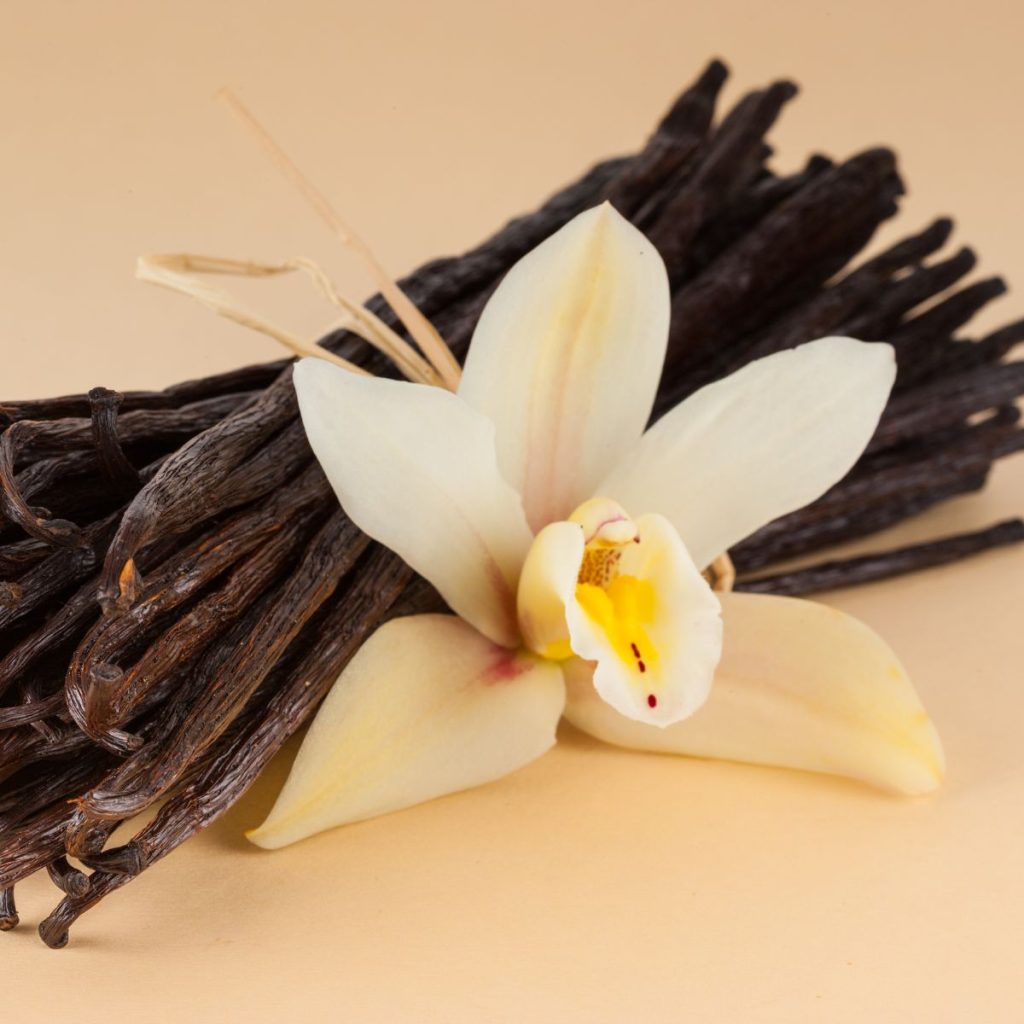
Understanding the Manufacturing Process of Vanilla Extract
To understand the manufacturing process of vanilla extract, it’s important to know how vanilla beans are harvested and processed.
Vanilla beans are carefully handpicked when they’re fully ripe, ensuring that they’re at their peak of flavor.
These beans are then subjected to a meticulous curing process, where they’re blanched, sweated, and dried.
Once dried, the vanilla beans are sorted and graded based on their size, moisture content, and appearance.
The next step involves the extraction of the rich vanilla flavor. The beans are typically soaked in a mixture of alcohol and water, extracting the aromatic compounds.
This mixture is then filtered and aged, allowing the flavors to develop and intensify.
Finally, the liquid extract is bottled, and ready to be used in various culinary creations.
Understanding this innovative manufacturing process allows for a greater appreciation of the complexity and quality of genuine vanilla extract.
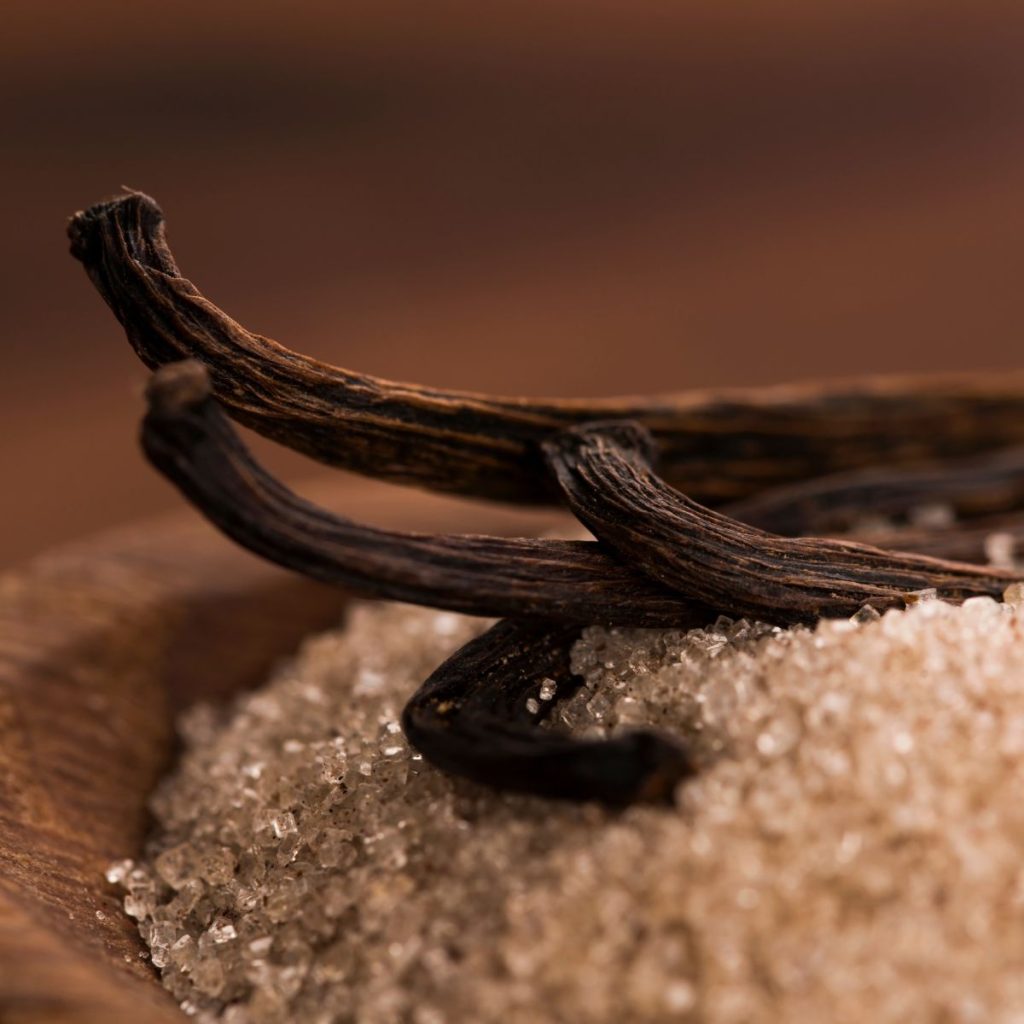
Exploring the Production Methods of Imitation Vanilla
Imitation vanilla is made using a combination of synthetic compounds and natural ingredients, giving it a distinct flavor profile that sets it apart from traditional vanilla extract.
The production methods of imitation vanilla involve the creation of vanillin, which is the main flavor compound found in natural vanilla beans.
Instead of using real vanilla beans, synthetic vanillin is created through a chemical process.
This synthetic vanillin is then combined with other natural ingredients to replicate the complex flavor of vanilla.
The production methods of imitation vanilla allow for greater control over the flavor profile and consistency, making it a versatile option for various culinary applications.
So, if you’re looking for a unique twist on vanilla, imitation vanilla offers a world of innovative possibilities.

Analyzing the Flavor Profiles of Vanilla Extract and Imitation Vanilla
When it comes to comparing the flavor profiles of vanilla extract and imitation vanilla, there are some key differences to consider.
While vanilla extract is made from real vanilla beans, imitation vanilla is typically made from synthetic vanillin or other artificial flavorings.
As a result, the flavor of vanilla extract is rich, complex, and natural, with notes of sweetness and warmth.
On the other hand, imitation vanilla tends to have a simpler, more one-dimensional flavor, often described as sweeter and less nuanced.
Vanilla extract also has a deeper and more pronounced aroma, adding a delightful fragrance to your dishes.

Choosing the Right Product for Your Culinary Needs
If you’re unsure which product to choose for your culinary needs, consider the flavor and aroma profiles of both vanilla extract and imitation vanilla.
Vanilla extract is made from real vanilla beans and has a pure, intense flavor with floral and sweet notes.
It adds depth and complexity to your dishes, enhancing both sweet and savory flavors.
On the other hand, imitation vanilla is made with synthetic compounds that mimic the taste of real vanilla.
It has a slightly different flavor profile, often described as more one-dimensional and less complex than vanilla extract.
However, imitation vanilla can still be a great choice if you’re looking for a more affordable option or if you want a milder vanilla flavor that won’t overpower other ingredients.
Ultimately, the choice between vanilla extract and imitation vanilla depends on your personal preference and the specific dish you’re making.
Whichever you choose, both are great for your vanilla-flavored creations. It will be perfect if you incorporate them into your coffee, homemade ice creams, or favorite cheesecake.


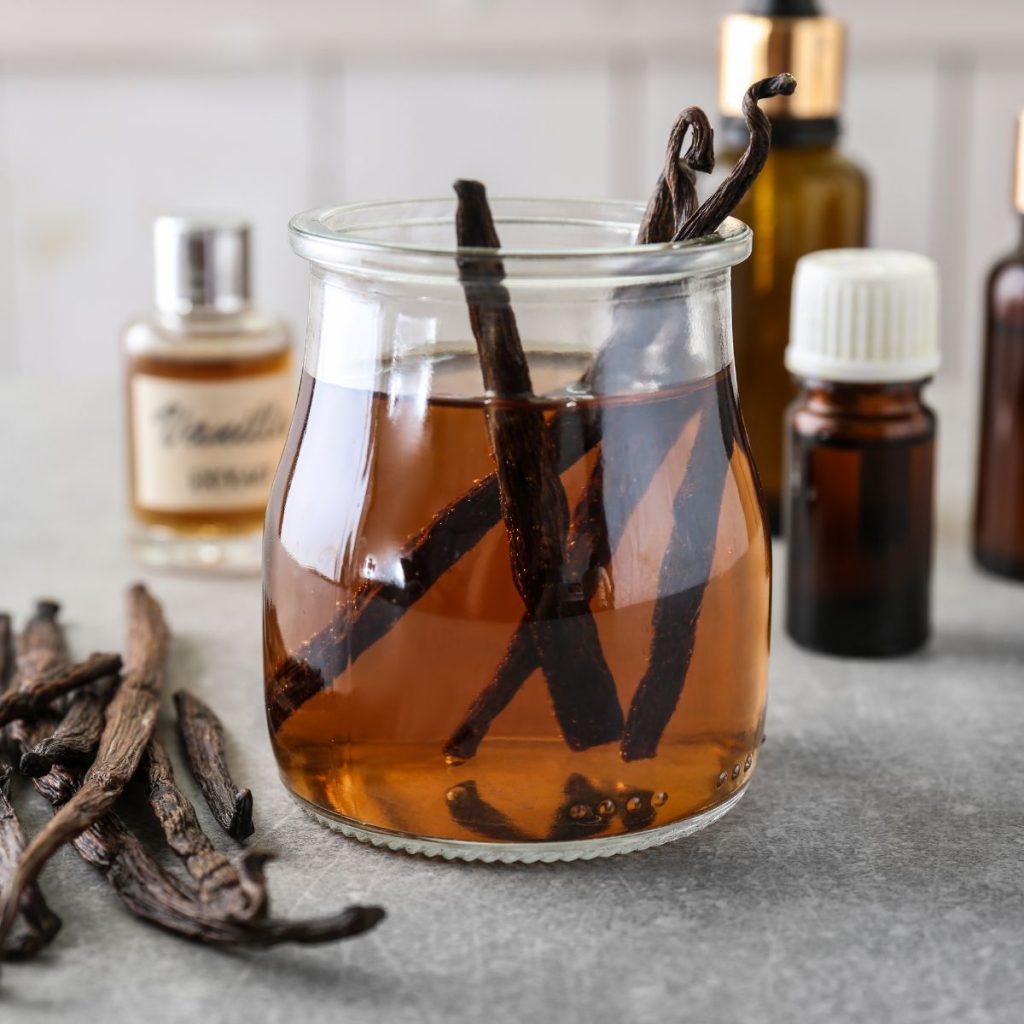


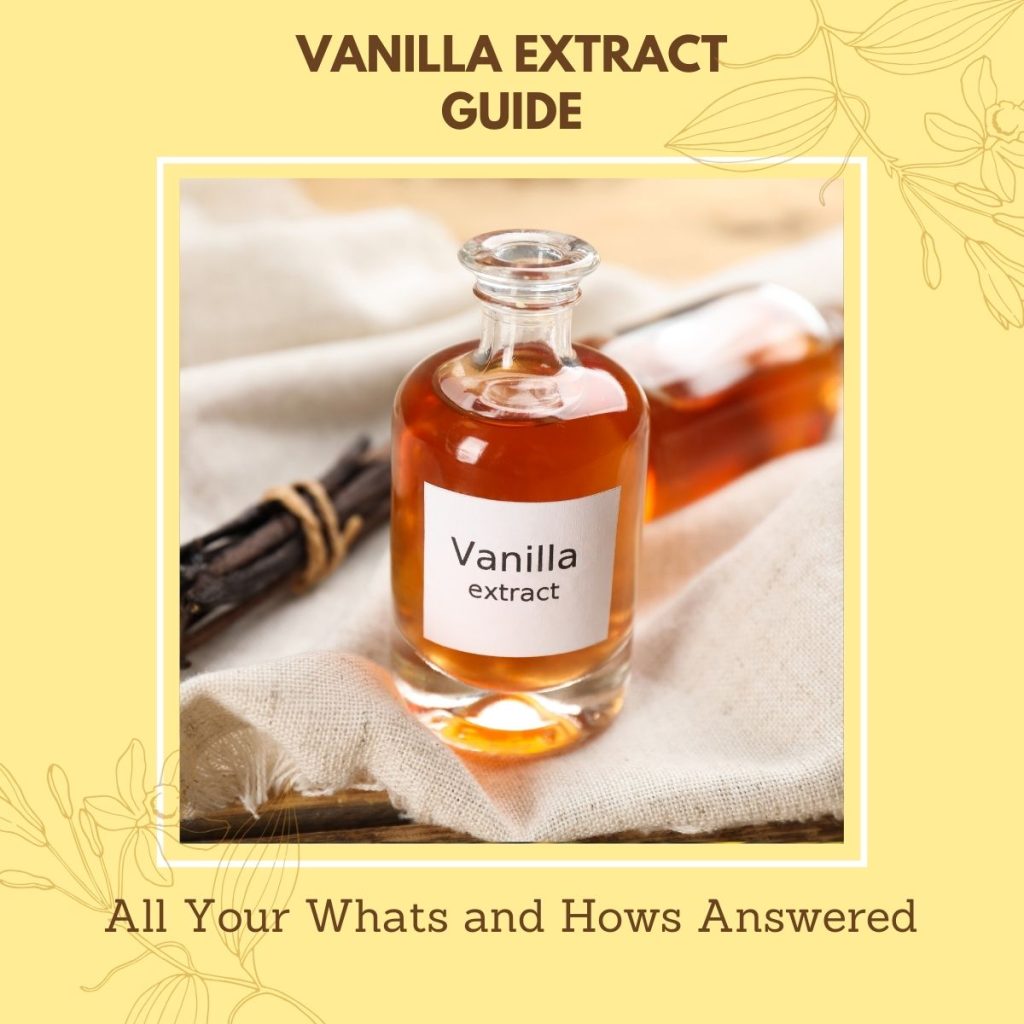
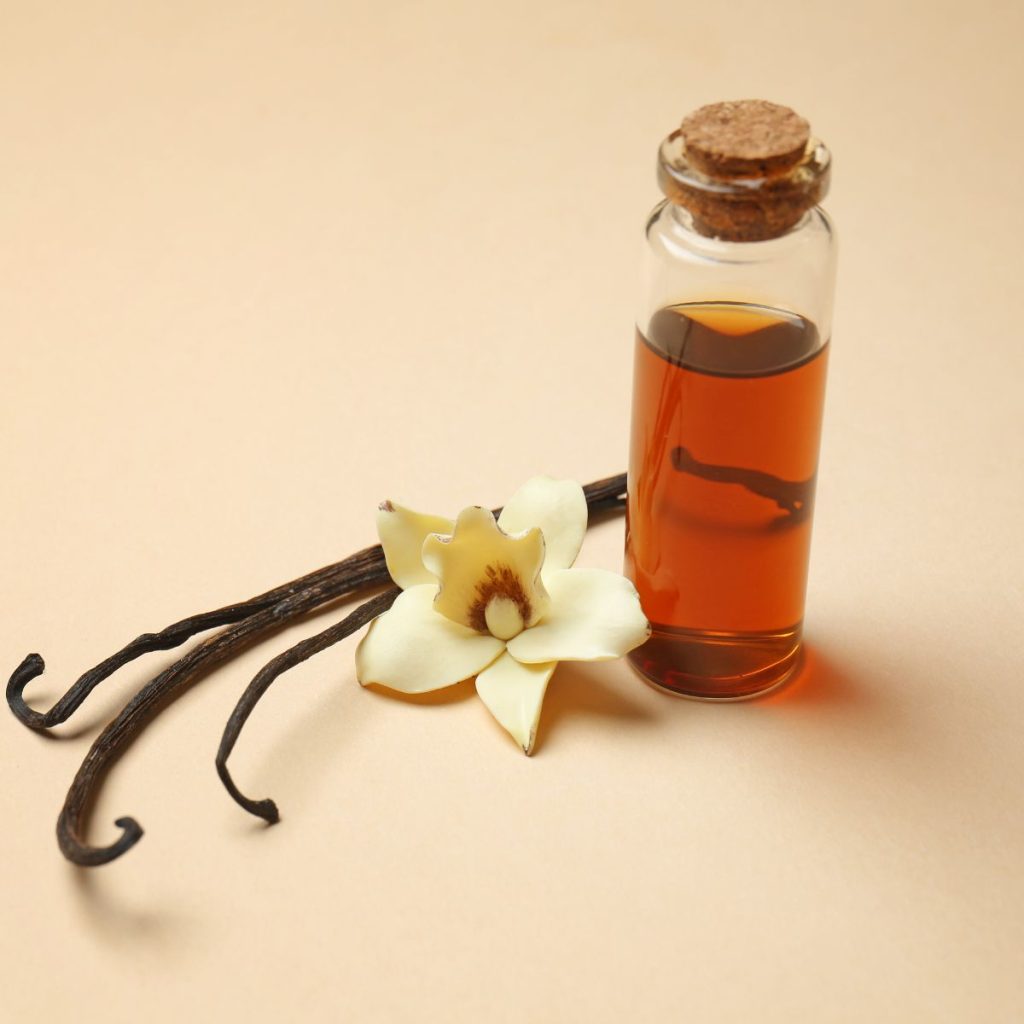

Konnichiwa! (Hello!) I'm Pat Tokuyama, a Japanese tofu cookbook author, who travels for music, food, and adventure. If you like Japanese tea, checkout some of the newestorganic japanese tea, matcha bowls and noren and more!
** Curious about the Plant Based Japanese Cooking Club? ** Learn more here!